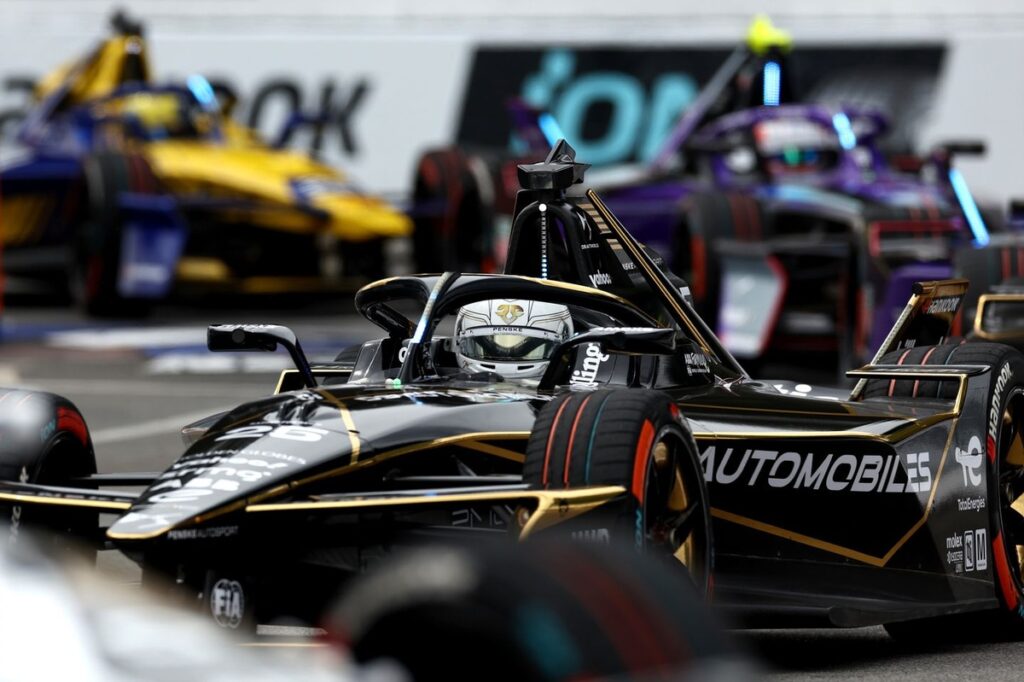Two-time Formula E champion Jean-Eric Vergne has warned of potential unintended consequences as the all-electric championship launches its Pit Boost next week at the Jeddah E-Prix.
Formula E introduced a raft of updates to its sporting and technical regulations this season, unveiling its Gen3 Evo. The car uses softer Hankook rubber and is equipped with four-wheel drive, which is used during qualifying duels, at the start of the race, and in Attack Mode. Lap times have significantly improved, with pole position nearly three seconds faster in Sao Paulo and 2.3 seconds quicker in Mexico.
The latest innovation is the long-awaited Pit Boost, which will debut in Saudi Arabia on 14-15 February and will be used in further double-headers, having been developed over more than two years. Every car will receive a 10% battery recharge at 600kW, with the mandatory pitstop taking about 30 seconds and having to be executed in a specific time frame during the race.
“There is going to be a great deal of unknown,” Vergne said, fearing the race leader might end up one lap down on some tracks while the safety car could jeopardise the pecking order.
“We know quite a few things are going to happen from the moment the pitstop window opens. Those who stop will start pushing hard to try and get the undercut done, those who stay out later will try and push not to be undercut by those who stopped.
Jean-Eric Vergne, DS Penske
Photo by: Joe Portlock / Motorsport Images
“Pitstops are fairly long; on some tracks, it’s possible we’ll be one lap down, so I hope the FIA and Formula E can ensure that the pitstops are maybe a little shorter so that the race remains comprehensible – because if you’ve got the leader coming out of the pits one lap down and there’s a safety car, it might be a little tricky.
“Luck is becoming a bit too much of a factor. Even the safety car is going to be an even more important factor during pitstops – imagine a driver stops last and there’s a safety car or full-course yellow right then, especially a safety car: he gets a free stop and comes out 30 seconds ahead of everyone.”
Meanwhile, Attack Mode has become much more powerful this season with all-wheel drive, but Vergne believes solutions need to be found in order to make the system fairer for all.
“This has happened to me twice in a row, in Sao Paulo and Mexico: when you activate your Attack Mode and one minute later there’s a full-course yellow, then the six-minute Attack Mode you’d planned is ruined,” the DS Penske driver deplored, having finished ninth and fifth in those races.
“When you know how important this mode is and how much performance, how many places you can gain with it, this just throws a big spanner in the works. If you’re unlucky and you activate it at the wrong time in the race, it’s quite costly.
“When you’re working like we all do – chasing the last thousandths of a second, trying to maximise races – luck being such a big factor is a bit frustrating, especially when you’re on the receiving end [of bad luck]. I think there are solutions to solve that problem – let’s see when they will be implemented.”
Envision driver Sebastien Buemi, also a Formula E champion, concurred: “I agree with JEV’s point. Attack Mode used not to be very efficient; now, the gain is so big that in the end, if you cannot use it fully, it can be extremely detrimental to the result – and luck plays too big a role.”
In this article
Be the first to know and subscribe for real-time news email updates on these topics
Subscribe to news alerts
Read the full article here

